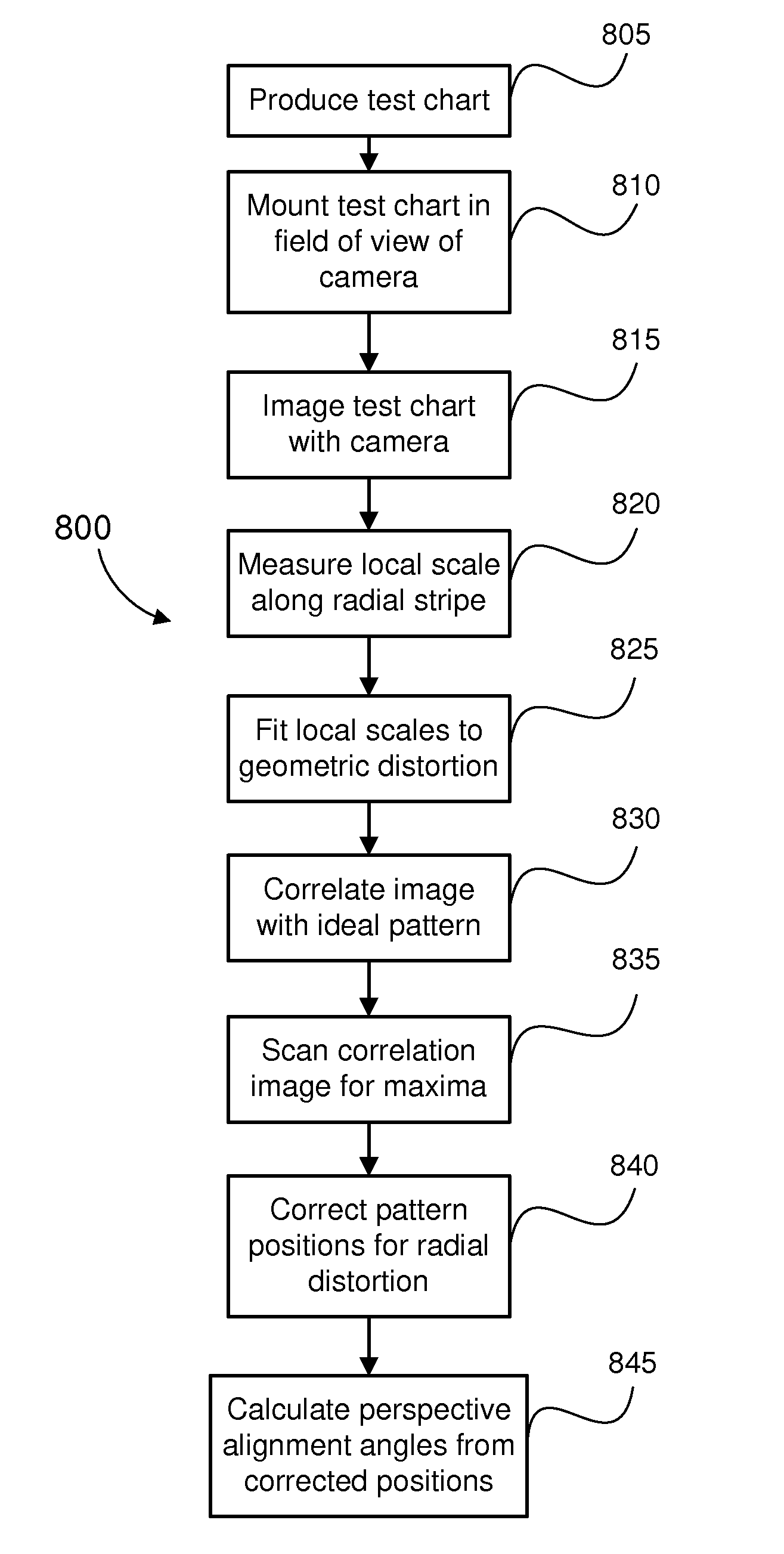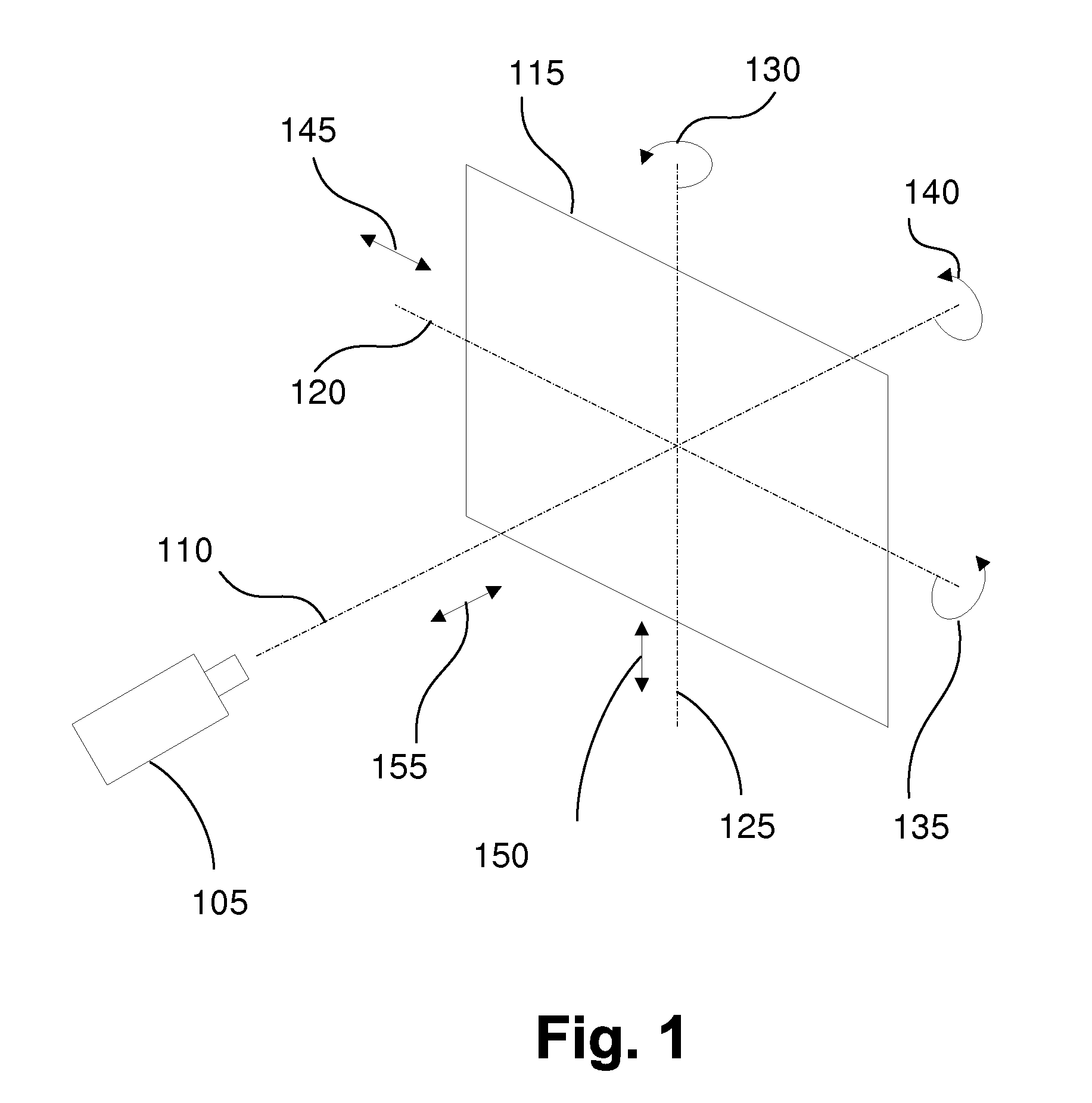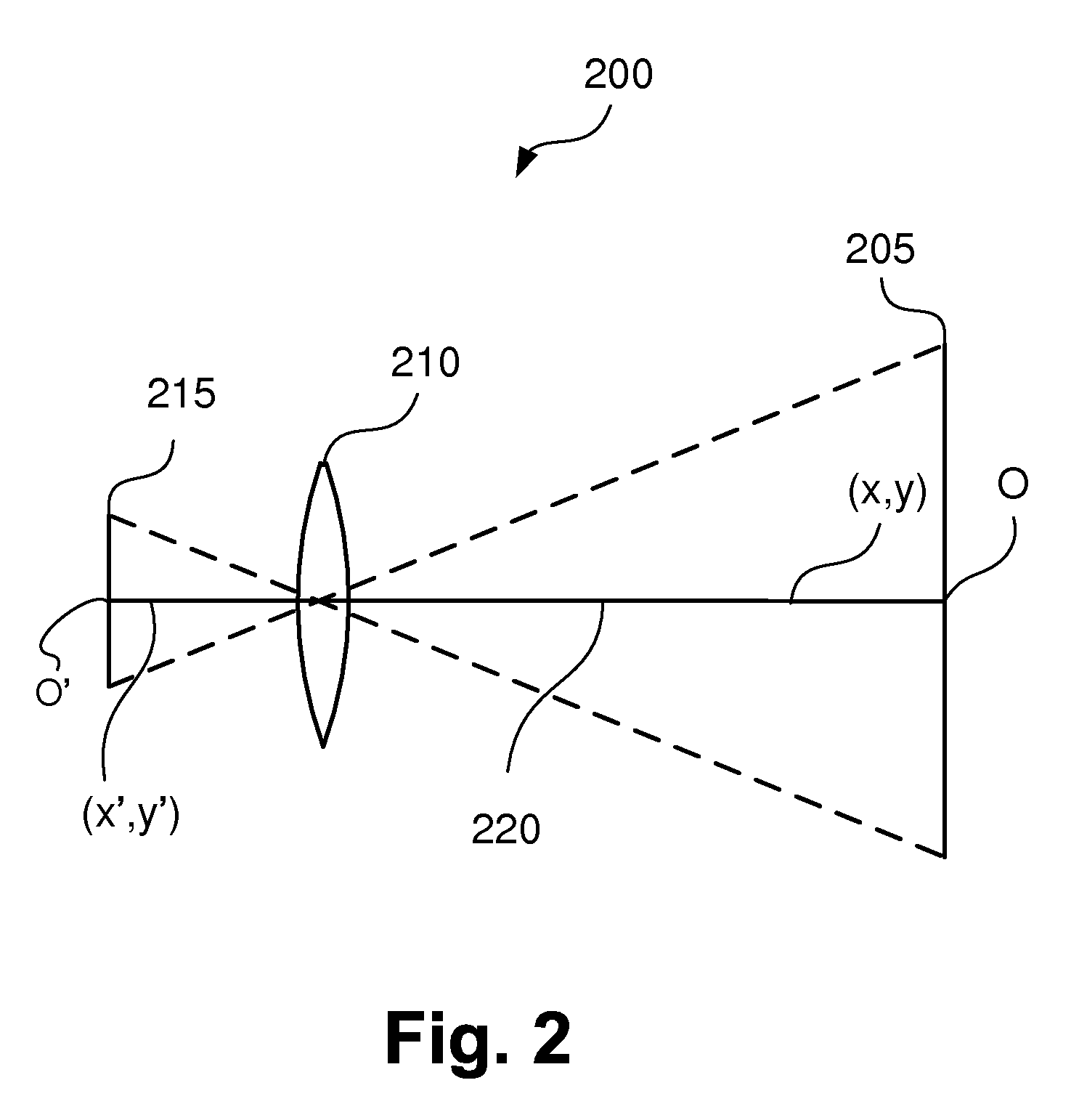Geometric parameter measurement of an imaging device
a technology of geometric parameters and imaging devices, applied in the field of camera calibration, can solve the problems of unsuitable techniques, difficult to remove ambiguities along the third dimension, and limit the accuracy of characteristics intended to be measured by the char
- Summary
- Abstract
- Description
- Claims
- Application Information
AI Technical Summary
Benefits of technology
Problems solved by technology
Method used
Image
Examples
Embodiment Construction
[0037]For applications such as making quantitative measurements of image quality, it is desirable to image a planar test chart with an imaging system, while either:[0038]having the test chart in a precisely specified geometric configuration with respect to the imaging system, or[0039]being able to precisely measure the geometric configuration of the test chart with respect to the imaging system.
[0040]If the test chart can be set up in a specified configuration (for example, an accepted standard) the measurements of image quality can be characterised properly as being measured for that configuration. On the other hand, if the configuration of the test chart is not precisely controlled, but can be measured accurately while making the image quality measurements, then those quality measurements can be properly qualified in terms of the geometric alignment. It may also be possible to interpolate or extrapolate the image quality measurements to produce good estimates of image quality for ...
PUM
 Login to View More
Login to View More Abstract
Description
Claims
Application Information
 Login to View More
Login to View More - R&D
- Intellectual Property
- Life Sciences
- Materials
- Tech Scout
- Unparalleled Data Quality
- Higher Quality Content
- 60% Fewer Hallucinations
Browse by: Latest US Patents, China's latest patents, Technical Efficacy Thesaurus, Application Domain, Technology Topic, Popular Technical Reports.
© 2025 PatSnap. All rights reserved.Legal|Privacy policy|Modern Slavery Act Transparency Statement|Sitemap|About US| Contact US: help@patsnap.com



